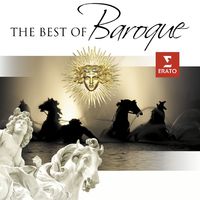
The Best of Baroque
Repackaging old recordings as some kind of ideal selection for newcomers is reprehensible. Would you serve a plate of leftovers to a party of new visitors to your home? That said, this disc gives the casual buyer a reasonable sampling of some of the new ways in which Baroque music has been performed over the last two decades, with almost all the performers coming from the world of "historical instruments": the use of musical instruments modeled on, or even dating back all the way to the time of, those for which the music was written. What the music loses in sweetness and sheen it gains back in vigor and drama. The "Stabat mater dolorosa" movement from the Pergolesi Stabat Mater exposes the listener to two of the really great voices in this field, French soprano Véronique Gens and countertenor (a male alto) Gérard Lesne. The program is nicely balanced between ultra-familiar pieces like Pachelbel's Canon (here presented with its originally accompanying Gigue as a Canon & Gigue in D major) and less commonly heard but still crucial composers like Henry Purcell and Marc-Antoine Charpentier. The splendor of French court music is briefly but well represented. Vivaldi is rather shortchanged, which is curious in view of the fact that there was almost 10 minutes of unused space on the disc, certainly enough room for one of his more imaginative short concertos. The Pachelbel piece is heard up front, and it's going to be a shock for those who have encountered this work in modern versions, which may be the idea. Britain's Taverner Players under Andrew Parrott blaze through the Canon in just over three and a half minutes. The reading of the equally familiar Albinoni Adagio comes last and is much more conventional; it might have been better to open with that and end with the brisk Canon, but this way the listener's ears are basically retuned right off. The music here was recorded in the 1990s, but it's as close to state of the art as you're going to get with a recording of this kind; there are plenty of Baroque collections out there with performances by lumbering symphony orchestras going back as far as the 1960s. The liner notes are brief and nearly incomprehensible, but the music here is worthwhile for the listener new to early music and ready to dip a finger in the pool.
